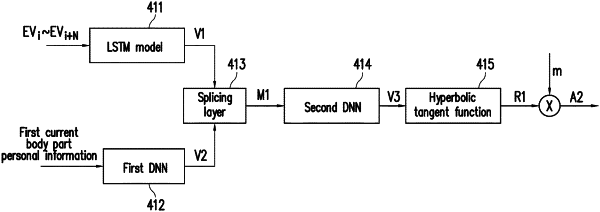| CPC A61N 1/36171 (2013.01) [A61B 5/395 (2021.01); A61B 5/397 (2021.01); A61N 1/36139 (2013.01)] | 9 Claims |

|
1. An electronic device, comprising:
an electromyography value measurement circuit;
a storage circuit, storing a code;
an electrode patch; and
a processor, coupled to the electromyography value measurement circuit, the storage circuit, and the electrode patch, and configured by the code to execute:
individually applying a corresponding first current to a body part of a user in a plurality of consecutive time intervals through the electrode patch, wherein the plurality of consecutive time intervals comprise an i-th time interval to an (i+N)-th time interval, where i and N are positive integers;
obtaining a plurality of electromyography values of the body part in each of the plurality of consecutive time intervals through the electromyography value measurement circuit;
determining a second current corresponding to an (i+N+1)-th time interval based on the first current corresponding to each of the plurality of consecutive time intervals, the body part, at least one personal information of the user, and the electromyography values of each of the plurality of consecutive time intervals, comprising:
converting the electromyography values in each of the plurality of consecutive time intervals into a first vector;
converting the first current corresponding to each of the plurality of consecutive time intervals, the body part, and the at least one personal information of the user into a second vector, and splicing the first vector and the second vector into a specific matrix;
converting the specific matrix into a third vector, and converting the third vector into a reference coefficient; and
multiplying the reference coefficient by a constant to generate the second current corresponding to the (i+N+1)-th time interval; and
applying the second current to the body part of the user in the (i+N+1)-th time interval through the electrode patch.
|